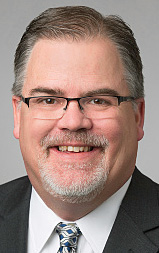

 In today's rapidly evolving internet landscape, staying up-to-date with the latest developments and trends is crucial for businesses looking to strengthen their online presence. One highly anticipated development that organizations have eagerly awaited is the next round of new generic Top-Level Domains (gTLDs). more
In today's rapidly evolving internet landscape, staying up-to-date with the latest developments and trends is crucial for businesses looking to strengthen their online presence. One highly anticipated development that organizations have eagerly awaited is the next round of new generic Top-Level Domains (gTLDs). more
 A new year and a new goat with new conditions, the goat was slowly eaten by jackdaws, and in the end, almost only the frame remained. This was really slow TV for the devastation… You can read more on Wikipedia about the devastating jackdaws and the straw... 36% IPv6 is equal to last year, and I had high hopes as Telia (AS3301) has made great progress in IPv6 and that Sweden should be the dominant country. more
A new year and a new goat with new conditions, the goat was slowly eaten by jackdaws, and in the end, almost only the frame remained. This was really slow TV for the devastation… You can read more on Wikipedia about the devastating jackdaws and the straw... 36% IPv6 is equal to last year, and I had high hopes as Telia (AS3301) has made great progress in IPv6 and that Sweden should be the dominant country. more
 Are you interested in helping guide the future of the Public Interest Registry (PIR), the non-profit operator of the .ORG, .NGO and .ONG domains? (and more) Or do you know of someone who would be a good candidate? If so, the Internet Society is seeking nominations for two positions on the PIR Board of Directors. The nomination deadline is 31 January 2024. more
Are you interested in helping guide the future of the Public Interest Registry (PIR), the non-profit operator of the .ORG, .NGO and .ONG domains? (and more) Or do you know of someone who would be a good candidate? If so, the Internet Society is seeking nominations for two positions on the PIR Board of Directors. The nomination deadline is 31 January 2024. more
 The quantum computing era is coming, and it will change everything about how the world connects online. While quantum computing will yield tremendous benefits, it will also create new risks, so it's essential that we prepare our critical internet infrastructure for what's to come. That's why we're so pleased to share our latest efforts in this area, including technology that we're making available as an open source implementation to help internet operators worldwide prepare. more
The quantum computing era is coming, and it will change everything about how the world connects online. While quantum computing will yield tremendous benefits, it will also create new risks, so it's essential that we prepare our critical internet infrastructure for what's to come. That's why we're so pleased to share our latest efforts in this area, including technology that we're making available as an open source implementation to help internet operators worldwide prepare. more
 Ookla recently published a blog that looks at the speed performance of satellite broadband, focusing mostly on Starlink. I haven't looked at this broadband sector for a while and thought it was time for an update. Starlink has had a busy year. At the end of November, the company had 5,500 satellites in orbit, up from over 3,200 at the end of 2022. The first constellation is still slated to reach almost 12,000 satellites, and the company has tentative permission from the FCC to extend to 42,000. more
Ookla recently published a blog that looks at the speed performance of satellite broadband, focusing mostly on Starlink. I haven't looked at this broadband sector for a while and thought it was time for an update. Starlink has had a busy year. At the end of November, the company had 5,500 satellites in orbit, up from over 3,200 at the end of 2022. The first constellation is still slated to reach almost 12,000 satellites, and the company has tentative permission from the FCC to extend to 42,000. more
 IoT devices have ingrained themselves into almost every aspect of modern life. From home assistants to industrial machinery, it's hard to find a device that isn't connected to a network and gathering data. Despite widespread adoption, IoT cybersecurity compliance remains surprisingly low. A big reason for this is the unique challenges IoT devices pose to operators. more
IoT devices have ingrained themselves into almost every aspect of modern life. From home assistants to industrial machinery, it's hard to find a device that isn't connected to a network and gathering data. Despite widespread adoption, IoT cybersecurity compliance remains surprisingly low. A big reason for this is the unique challenges IoT devices pose to operators. more
 At a workshop on the implications of Article 28 for the DNS industry organized by eco -- Association of the Internet Industry in October 2023, stakeholders from the DNS industry, the European Commission, national governments, and the ICANN community convened to discuss the challenges facing the DNS industry and to work together on avoiding fragmentation as much as possible. more
At a workshop on the implications of Article 28 for the DNS industry organized by eco -- Association of the Internet Industry in October 2023, stakeholders from the DNS industry, the European Commission, national governments, and the ICANN community convened to discuss the challenges facing the DNS industry and to work together on avoiding fragmentation as much as possible. more
 The 78th UN General Assembly (UNGA) addressed the issue of cybersecurity again at one of its last meetings in December 2023. It included the adoption of four resolutions on the Open-Ended Working Group (OEWG), a "Program of Action" (POA), and autonomous weapon systems. The texts of the four draft resolutions were negotiated in UNGA's 1st committee, responsible for international security issues, in October and November 2023. more
The 78th UN General Assembly (UNGA) addressed the issue of cybersecurity again at one of its last meetings in December 2023. It included the adoption of four resolutions on the Open-Ended Working Group (OEWG), a "Program of Action" (POA), and autonomous weapon systems. The texts of the four draft resolutions were negotiated in UNGA's 1st committee, responsible for international security issues, in October and November 2023. more
 In May of this year, I questioned whether the continued legal maneuvering of a company called Altanovo Domains Ltd. (Altanovo) could further delay the launch of .web. After reading its second Independent Review Process (IRP) complaint, and ICANN's response, it seems that the unfortunate answer is a resounding "yes," or at least that is Altanovo's intent. more
In May of this year, I questioned whether the continued legal maneuvering of a company called Altanovo Domains Ltd. (Altanovo) could further delay the launch of .web. After reading its second Independent Review Process (IRP) complaint, and ICANN's response, it seems that the unfortunate answer is a resounding "yes," or at least that is Altanovo's intent. more
 For well over a decade, it was fairly easy to understand the trajectory of the broadband industry. In the residential market, cable companies snagged all the growth while telcos shrank as customers abandoned DSL. Other technologies like fiber or fixed wireless gained customers but were a blip on the national scale. more
For well over a decade, it was fairly easy to understand the trajectory of the broadband industry. In the residential market, cable companies snagged all the growth while telcos shrank as customers abandoned DSL. Other technologies like fiber or fixed wireless gained customers but were a blip on the national scale. more
 Section 706 of the Telecommunications Act of 1996 orders the FCC to "encourage the deployment on a reasonable and timely basis of advanced telecommunications capability to all Americans." On October 25, The FCC issued a notice of inquiry (NOI) into how well we are doing and invited comments. The NOI points out that COVID and the concomitant increase in the use of interactive applications has "made it clear that broadband is no longer a luxury... more
Section 706 of the Telecommunications Act of 1996 orders the FCC to "encourage the deployment on a reasonable and timely basis of advanced telecommunications capability to all Americans." On October 25, The FCC issued a notice of inquiry (NOI) into how well we are doing and invited comments. The NOI points out that COVID and the concomitant increase in the use of interactive applications has "made it clear that broadband is no longer a luxury... more
 ICANN's response to the European Union's Network and Information Security Directive (NIS2) is a litmus test on whether its policy processes can address the needs of all stakeholders, instead of only satisfying the needs of the domain industry. Early indications from the ICANN Hamburg meeting point to another disappointment for law enforcement, cybersecurity professionals, and the many businesses seeking to reinstate WHOIS as required by NIS2. more
ICANN's response to the European Union's Network and Information Security Directive (NIS2) is a litmus test on whether its policy processes can address the needs of all stakeholders, instead of only satisfying the needs of the domain industry. Early indications from the ICANN Hamburg meeting point to another disappointment for law enforcement, cybersecurity professionals, and the many businesses seeking to reinstate WHOIS as required by NIS2. more
 The FCA has been naming and shaming financial scam domains for decades. Its "warning list" is probably one the most extensive databases of its kind. But does it do a good enough job of actually warning people? Let us begin with the FCA website, which would not exactly get full points for user-friendliness: locating the "watch list" is a task in and of itself, to say nothing of consulting and scrutinising it. more
The FCA has been naming and shaming financial scam domains for decades. Its "warning list" is probably one the most extensive databases of its kind. But does it do a good enough job of actually warning people? Let us begin with the FCA website, which would not exactly get full points for user-friendliness: locating the "watch list" is a task in and of itself, to say nothing of consulting and scrutinising it. more
 For many years, I've heard people say that broadband is essential. I read it in articles. I hear it on broadband panels and webcasts. I see it said in comments on social media. It's obvious that a whole lot of people think broadband is essential. But what exactly does that mean? Does it mean that broadband is important in a lot of people's lives, or does it mean that broadband is something that society can't live without? more
For many years, I've heard people say that broadband is essential. I read it in articles. I hear it on broadband panels and webcasts. I see it said in comments on social media. It's obvious that a whole lot of people think broadband is essential. But what exactly does that mean? Does it mean that broadband is important in a lot of people's lives, or does it mean that broadband is something that society can't live without? more
 DOTZON presents the sixth edition of the Digital Company Brands study. After having introduced the study in 2018, DOTZON continued to expand and enhance the underlying data to display how companies successfully use their Digital Company Brands. The Digital Company Brand is the digital dimension of a company brand and mirrors the "digitalness "of a company. more
DOTZON presents the sixth edition of the Digital Company Brands study. After having introduced the study in 2018, DOTZON continued to expand and enhance the underlying data to display how companies successfully use their Digital Company Brands. The Digital Company Brand is the digital dimension of a company brand and mirrors the "digitalness "of a company. more
Sponsored byVerisign

Sponsored byRadix

Sponsored byCSC

Sponsored byVerisign

Sponsored byIPv4.Global

Sponsored byDNIB.com

Sponsored byWhoisXML API
